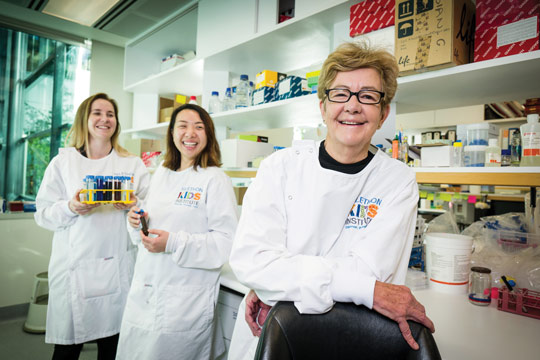Search
Research
Inflammatory bowel diseases: interrelationships between dietary vitamin D, exposure to UV radiation and the fecal microbiomeThis review explores the interaction of vitamin D, and ultraviolet radiation, with the intestinal innate and adaptive immune systems
Research
Vitamin D is crucial for maternal care and offspring social behaviour in ratsThese data highlight that early life levels of vitamin D are an important consideration for maternal behavioural adaptations as well as offspring neuropsychiatry
Research
Exposure to Solar UVR Suppresses Cell-Mediated Immunization Responses in Humans: The Australian Ultraviolet Radiation and Immunity StudyHigher UVR exposure at antigen sensitization was associated with a reduced delayed-type hypersensitivity response and altered T helper type 17 kinetics
Research
Predictors of vitamin D-containing supplement use in the Australian population and associations between dose and serum 25-hydroxyvitamin D concentrationsThe prevalence of vitamin D-containing supplement use was generally low in the Australian population, particularly for single vitamin D supplements
Research
UV Irradiation of Skin Regulates a Murine Model of Multiple Sclerosis.The prevalence of multiple sclerosis follows a latitude gradient, with increased disease at higher latitudes.
Research
Self-Reported Changes in Sun-Protection Behaviors at Different Latitudes in AustraliaThe strongest determinants of self-reported sun-protection behavior changes due to concerns about vitamin D were attitudes and location
Research
Prevalence and Correlates of Observed Sun Protection Behaviors Across Different Public Outdoor Settings in Melbourne, AustraliaSkin cancer prevention efforts in Australia have increasingly incorporated a focus on protection during incidental sun exposure. This complements the long-present messages promoting protection in high-risk settings and avoidance of acute intense bouts of sun exposure.
Research
Mapping the citation network on vitamin D research in Australia: a data-driven approachVitamin D research can vary geographically, as vitamin D status is influenced by latitude, season, dietary intake, body mass index, ethnicity, and public health initiatives. Over the last two decades, research on vitamin D has increased in Australia, where the potential for sun exposure (a major source of vitamin D) is high. We aimed to identify key topics and gaps in vitamin D research in Australia using a data-driven approach.

News & Events
UV and Vitamin DResearchers at The Kids Research Institute Australia are continuing to hone in on the effects of ultraviolet radiation and vitamin D on the immune system.
News & Events
Exposure to sunlight could reduce asthmaAustralian researchers have found that exposure to measured doses of ultraviolet light, such as sunlight, could reduce asthma.
